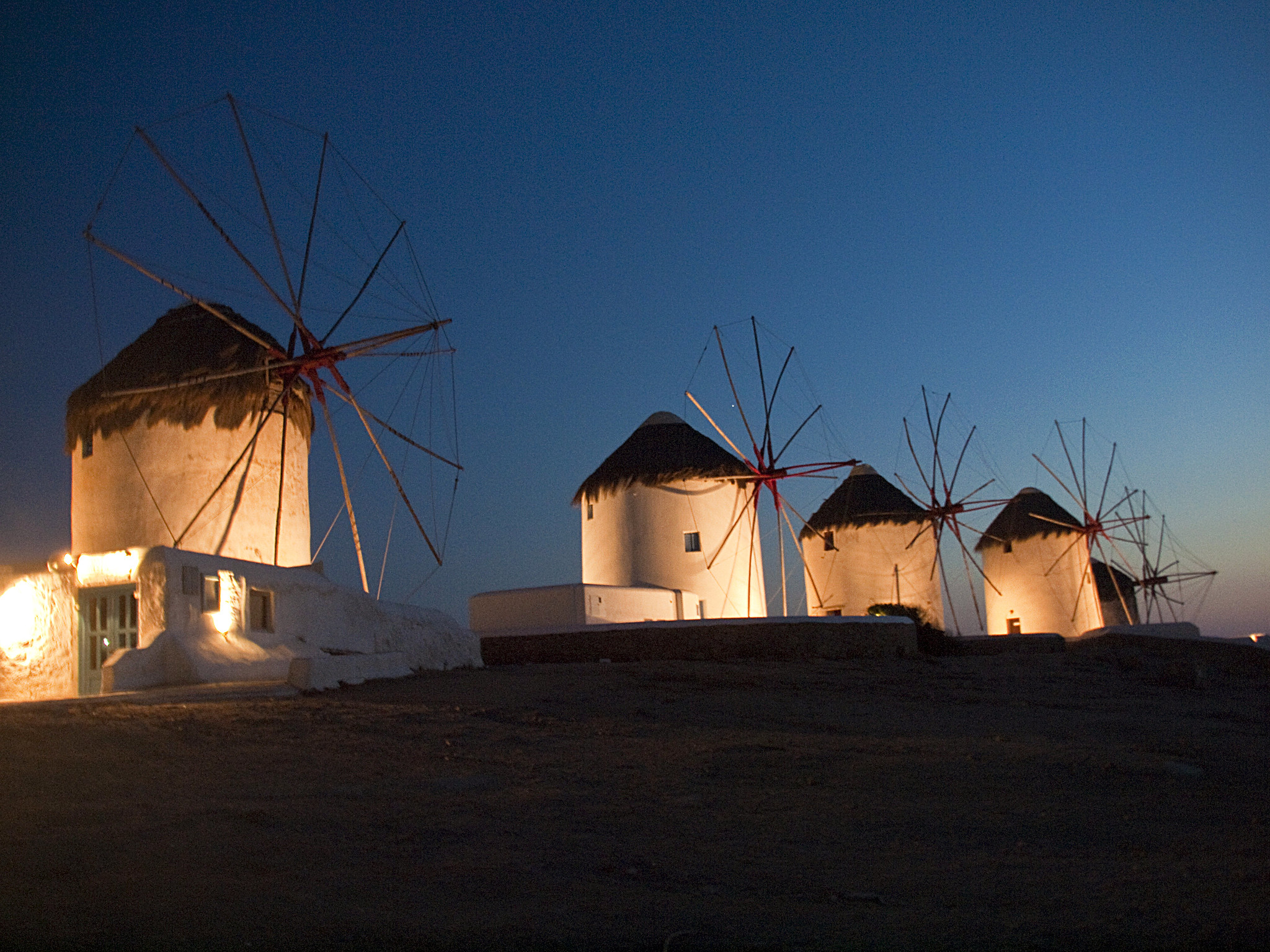Perched majestically on a hill overlooking the charming town of Mykonos, the iconic 16th-century windmills stand as silent witnesses to the island’s rich history and enduring charm. These elegant structures, with their cylindrical stone bodies and pointed thatched roofs, have become synonymous with the Mykonos skyline and serve as one of the most recognizable landmarks in the Greek islands. For visitors to this enchanting Aegean destination, a trip to the windmills is not just a sightseeing excursion but a journey through time, offering a glimpse into the island’s past while providing breathtaking views of the present.
The history of the Mykonos windmills dates back to the Venetian era when the island was a crucial stop on maritime trade routes. Built primarily in the 16th century, these windmills played a vital role in the local economy, harnessing the power of the strong northern winds to grind wheat and barley. At their peak, there were 16 windmills operating on Mykonos, forming an essential part of the island’s agricultural production and export industry. Today, while no longer operational, the remaining windmills stand as proud reminders of this industrious past, their well-preserved structures a testament to the craftsmanship of bygone eras.
Located in the Chora area, also known as Mykonos Town, the most famous cluster of windmills can be found in the Kato Mili (Lower Mills) area. This group of seven windmills, perfectly positioned to catch the island’s prevailing winds, offers visitors an unparalleled photo opportunity. The stark white of the windmills against the deep blue Aegean sky creates a quintessential Greek island scene that has graced countless postcards and travel brochures. Our concierge service can arrange guided tours to these windmills, providing in-depth historical context and ensuring you capture the perfect photograph to commemorate your visit.
The architectural design of the Mykonos windmills is a marvel of functionality and aesthetics. Each windmill stands three stories tall, with a cylindrical shape that narrows slightly towards the top. The ground floor typically housed storage areas and living quarters for the miller, while the upper floors contained the grinding mechanisms. The exterior walls, constructed from local stone, are whitewashed to reflect the harsh summer sun, a practical solution that has become an iconic part of Cycladic architecture. The conical roof, once thatched with wood and straw, would have supported the windmill’s sails, which were made of wood and canvas.
Visitors approaching the windmills will be struck by their commanding presence and the sweeping views they offer of Mykonos Town and the sea beyond. The area around the windmills has been thoughtfully preserved, with charming pathways and viewing platforms that allow tourists to explore and appreciate these historical structures up close. The juxtaposition of the centuries-old windmills against the backdrop of the bustling modern town below creates a captivating contrast that encapsulates the essence of Mykonos – a place where ancient history and contemporary luxury seamlessly coexist.
While the exterior of the windmills is undoubtedly impressive, the interior holds its own fascination. Although not all windmills are open to the public, some have been converted into small museums, offering visitors a chance to step inside and explore the inner workings of these historical marvels. Our concierge service can assist in arranging visits to accessible windmills, providing you with an immersive experience that brings the island’s agricultural heritage to life.
The best time to visit the Mykonos windmills is during the golden hours of sunrise or sunset. As the sun’s rays paint the sky in hues of gold and pink, the whitewashed walls of the windmills take on a warm glow, creating a truly magical atmosphere. Photography enthusiasts will find endless inspiration here, with each changing light offering new perspectives on these timeless structures. For those seeking a more serene experience, early morning visits allow for quiet contemplation before the arrival of day-trippers and cruise ship passengers.
Beyond their historical and aesthetic appeal, the Mykonos windmills have become deeply ingrained in the island’s cultural identity. They feature prominently in local festivals and celebrations, often serving as a backdrop for traditional music and dance performances. During the summer months, the area around the windmills comes alive with outdoor exhibitions and art installations, showcasing the work of local and international artists inspired by the island’s beauty and heritage.
For visitors looking to extend their exploration of Mykonos’ historical landmarks, the windmills serve as an excellent starting point. From here, it’s a short walk to other notable attractions such as Little Venice, with its colorful waterfront houses, and the charming Paraportiani Church. Our concierge service can design custom itineraries that seamlessly incorporate visits to these sites, ensuring you make the most of your time on the island.
As day turns to night, the Mykonos windmills take on a different character. Softly illuminated against the darkening sky, they provide a romantic backdrop for evening strolls or al fresco dining in nearby restaurants. The gentle whispering of the wind through the surrounding area serves as a poignant reminder of the purpose these structures once served, connecting modern-day visitors with the island’s windswept past.
In conclusion, the Mykonos windmills stand as enduring symbols of the island’s history, beauty, and resilience. These 16th-century marvels not only offer visitors a window into Mykonos’ past but also provide some of the most stunning views and photo opportunities on the island. Whether you’re a history buff, a photography enthusiast, or simply seeking to immerse yourself in the timeless charm of the Greek islands, a visit to the Mykonos windmills is an essential part of any trip to this Aegean paradise. With their commanding presence and rich historical significance, these iconic structures continue to captivate and inspire, ensuring their place as beloved landmarks for generations to come.

